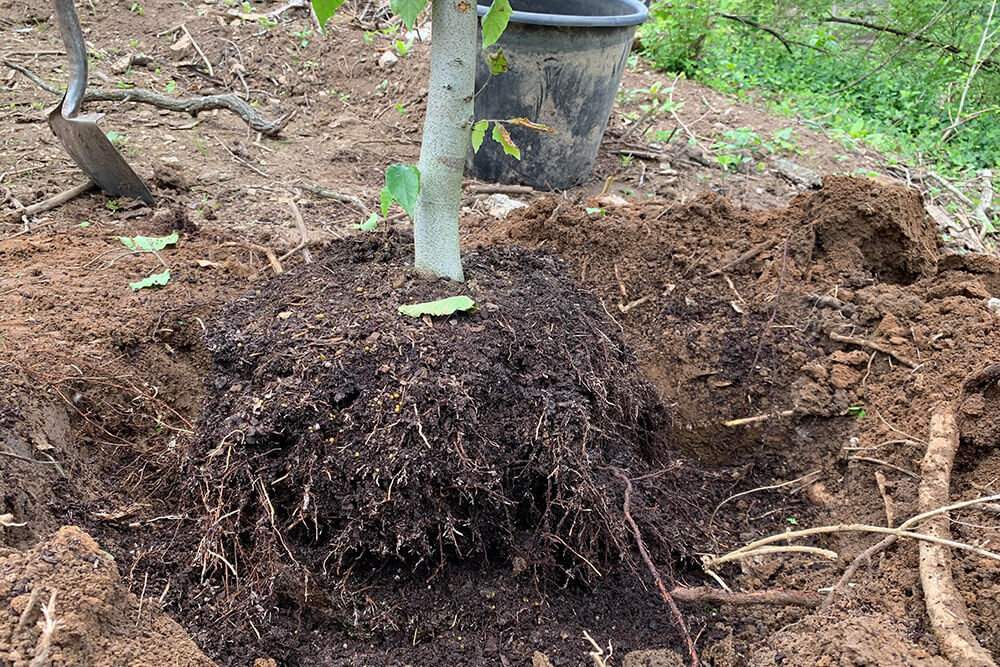How to Slowly Kill Your Tree, Part 3: Planting Too Deeply
When planting a tree, dig a hole two to three times wider than the root ball, but only as deep as the ball itself.
Ensure You Don't Plant too Deep
When you’re planting a young tree, it’s important to pay attention to how the soil around it can set the tree up for success. Before planting, you'll need to know what kind of tree is right for your soil and what the soil needs to help the tree grow. If your soil is alkaline, there are many choices of deciduous trees whose changing colors and mature size may factor into the species chosen. If your soil is more acidic, an evergreen might be the right choice. Whichever kind of tree is selected, the soil it is planted in will need to be prepared to be hospitable to the sapling. It should be aerated, fluffy and moist, rather than compacted and dry. Air pockets within the soil allow water to be held, roots to expand and bioactivity to take place. Adding organic matter or compost to the soil helps increase the nutrients at the planting site.
Root Depth
Don’t plant your tree too deep! In nature, tree seeds fall to the ground, or are buried by animals, and are effectively planted at surface level. Those sprouts that survive and grow are never buried very deep, and are gently covered with leaves and other organic matter on the forest floor. When you’re planting a ready-grown sapling in your yard, this surface-level situation should be recreated for the good health of the tree. When digging the hole, it should be 2-3 times the size of the root ball of the tree. The top roots should be an inch or two above ground level, with the rest buried in the soil. When roots are planted too deep, they are suffocated. Even 4-5 inches of extra depth can make a big difference in the root’s ability to get the air, water, and topsoil nutrients that will contribute to healthy growth.
Packing the soil beneath the roots will help ensure it doesn’t sink into the ground over time. Roots that are too deep or have too much cover over them may become stunted or grow in malformed shapes that affect the tree’s ability to breathe and take in water and nutrients. Making sure that conditions are right when the tree is first planted avoids having to dig it up and replant it if there are signs of stress; disturbing a tree’s roots to move it is very disruptive.
Caring for Shallow Anchors
The general impression is that a tree’s root system is a mirror image of its branches and crown, but in fact, a tree’s roots tend to be shallow and wide. The root system doesn’t go as deep as many believe, often not more than several feet down. Roots want to be at the surface level to get water and oxygen, and to benefit from the nutrients of bioactive topsoil. For these reasons, it’s important that a tree isn’t placed too deep in the ground when it's planted. Working with an arborist or seeking the advice of the Nashville Tree Conservation Corps will help you make choices about the right kind of tree for your property and best practices to ensure that your young tree becomes a healthy, mature specimen.

